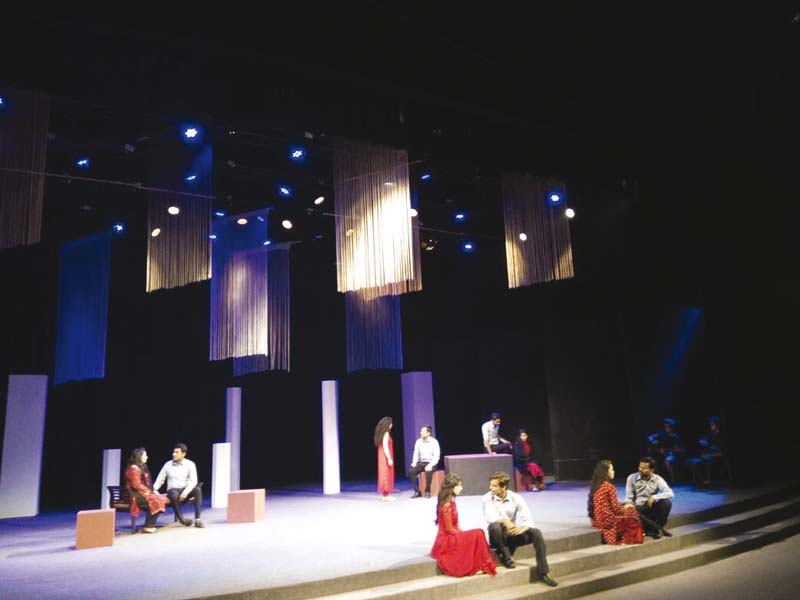
Contrary to film business where makers compromise on quality to appeal to the audiences for more profits, in theatre, that is not the cause.
On Thursday, National Academy of Performing Arts (NAPA) showcased an adaptation of Norwegian playwright Henrik Ibsen’s A Doll’s House. Directed by Zain Ahmed, the play Gurya Ka Ghar, which is part of a three-play series, draws on themes of self-discovery and the status of women in society.
As Ahmed attempted to make Ibsen proud, he concurrently experimented with the structure and presentation of the play. It started with six actors – three male, three female - on stage. With the director using a technique where one character is performed by multiple actors, the men played the role of Torvald Helmer, a newly promoted bank manager, and the women played Nora Helmer, his wife and mother of three. At first, this unusual technique, previously seen in Ahmed’s Shakuntala, came as a surprise, not because the roles weren’t clear, but because as an audience, you are not used to being challenged.
Ahmed did exactly what he aimed for: experiment and challenge. Nevertheless, it takes a few minutes to get into the zone, and into the performances. As the play progresses, more characters are introduced.
It can safely be said that the ensemble, comprising Meesam Naqvi, Saad Zameer, Taha Khan, Haris Khan, Zaki Ullah Khan, Erum Bashir, Marya Zameer, Hajra Yamin, Shamila and Maha Ali, has truly done justice to the characters. What’s commendable is that not a single actor looked out of place. The few performances that really stood out included those by Yamin, Bashir and Haris, who not only showcased brilliant subtlety, but also managed to captivate attendees with their presence. The three proved the fact that an actor must not only act with their body, but also with their eyes.
Sharjeel and Jahangir, supervised by Sounds of Kolachi maestro Ahsan Bari, provided the occasional music needed for the musical scenes. These scenes, however, were possibly the weakest in terms of performance and the impact they were supposed to have. One aspect that should be noted is the director’s near-perfect direction. What could have been a huge mess with actors bumping and tripping on stage turned into a great lesson in stage blocking, a benchmark for others planning to incorporate the technique into their performances. Each actor was perfectly on point with their position and posture throughout the show.
All in all, while the experimental adaptation had its minor weaknesses, it worked in most parts and so all is forgiven. On the top of that, the play served as another platform for the team to refine their craft and do what they do best. Nothing new could be said that hasn’t been said before, about the theme. Ahmed’s words rang true: “That’s what theatre is supposed to do: make you question everything.”
The second play of the series, Uzma Sabeen’s Mere Samne Wali Khidki Mein will be staged on August 17.
Published in The Express Tribune, August 13th, 2016.
Like Life & Style on Facebook, follow @ETLifeandStyle on Twitter for the latest in fashion, gossip and entertainment.

1722586547-0/Untitled-design-(73)1722586547-0-165x106.webp)


1732326457-0/prime-(1)1732326457-0-165x106.webp)
1732308855-0/17-Lede-(Image)1732308855-0-270x192.webp)











COMMENTS
Comments are moderated and generally will be posted if they are on-topic and not abusive.
For more information, please see our Comments FAQ